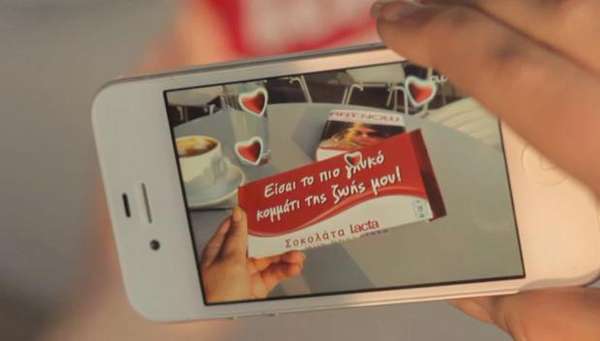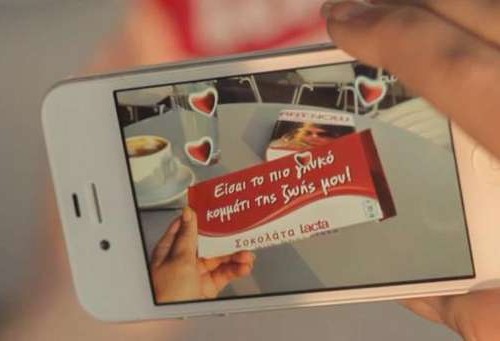
The world is getting smarter – and so is packaging. Exciting technologies, such as Augmented Reality (AR) or Near-Field Communication (NFC), today enable even a humble carton box to entertain or inform the consumer in ways that are both magical and pragmatic. Not only can the artwork itself appear to come alive but the nature of this new engagement creates a sense of interaction far more immediate and profound than traditional on-pack promotions could ever be.
This gives packaging two important new powers. First, the object itself seems to acquire digital properties that make it worth ‘browsing’ in the same way that a consumer might previously have visited a website – if only to see what happens when they do so. In addition, the packaging can then enable them to easily perform a specific action, such as enter a competition. This connects the world of print to the online ether and is the missing link that completes a virtuous circle.
So there we have it: smart, interactive packaging. This is the new mass-medium consumers can now dip into with no more than, say, a mobile phone and pot of yoghurt. Given smartphone sales are set to break the two-billion mark and people are now as likely to have a phone on them at any given moment than their house keys, it is a big audience. One that brands cannot afford to ignore.
That said, even traditional, let’s call it pre-digital, packaging, which is what constitutes almost the entirety of what’s out there today, can be described as a ‘smart’ form of brand communication.
The product or brand story – rich in all its insights, benefits and reasons to believe – has already been expertly coded by designers through the use of symbols. These symbols include the logos, typography and other graphical devices as well as more subtle, albeit equally powerful, ways to communicate brand-values, such as the form, colour and materials employed in the packaging.
Advertising is arguably a more direct way to make the sale. It typically tells the same brand-story but adds a soundtrack, dialogue, and usually features consumers as the smiling beneficiaries.
But what if consumers could enhance, or augment, the packaging to unpack these brand assets that a designer has been forced to abbreviate or leave out entirely so as to fit them onto a carton? If they could ‘decode’ these messages to, say, bring to life the cheeky monkey printed on the pot to perform on their kitchen table in the way that it does in the TV advert, that’d be a reason to buy.
In this context, the packaging takes on a fascinating new role as a media channel in its own right. And it’s got a unique asset in the form of some desirable, built-in content. It’s called the product.
To thrive in today’s brave new world of communication involves understanding the ways in which the rules of engagement have rapidly evolved. As we all know, it’s no longer enough for brands to concoct a message and then sell it to passive consumers in top-down fashion.
It’s about creating content that is genuinely engaging and which consumers naturally share because it is so good. Content that invites people to have a conversation, to interact, or even co-create new ideas. This is what transforms consumers into fans or, better still, a community. This is the beating heart of contemporary brand-communications and those that fail to grasp the concept will eventually perish.
Experts enjoy debating which magic ingredients make up the secret sauce of shareable content. However, one thing is for certain: packaging is the ideal medium through which a brand can reach out to its consumers. After all, you are never more enthused about a chocolate snack then at the moment you buy one or, better still, are eating it. If only the packaging could provide a bigger multimedia canvas to showcase this love. If only it could provide the same interaction or ability to recognise customers that a web-browser does.
Well, guess what? Packaging can do all of these things right now. You just need to know how to blend the digital and physical worlds together.
A bigger question than how to go about this is: what extra content should the packaging provide? This is a tricky one but, as with every other new channel created in the digital gold-rush, brands need to think hard about which ideas add genuine value for the consumer, and what is frivolous, intrusive, or plain irrelevant. It’s not enough to jump on a bandwagon because rivals are doing so.
More than anything, an interactive-packaging experience must relate to the rest of a brand’s values and be produced with the same care as that of any other marketing channel. Great things can be achieved quickly and with modest budgets but it’s far better to do nothing then to put out something rubbish that barely works merely to say you have done so. That is a fool’s errand.
To get this right and add real value, we need to understand the specific needs and contexts that consumers have when interacting with packaging already and then build upon all this thinking. Don’t be distracted by technical wizards who try to bamboozle with slick 3-D animations simply because they can. It’s your brand – try to work with people who care about it as much as you.
The technologies that constitute interactive packaging are fairly new and each has pros or cons. Before we get into the specifics, it’s important to understand what these actually represent.
The best-known is probably the QR code, which is a 2-D symbol that can be recognised by a smartphone running a piece of software able to recognise it. Each code acts as a shortcut that simply instructs the phone to perform a specific action, such as visit a certain web-address.
Augmented Reality (AR) is a way to add elements that aren’t really there to a live-camera view of the world. So, for instance, you can overlay animation onto a view of a cereal pack to make it look as if the printed material has come alive. To employ AR, the consumer needs a smartphone or webcam (and one day, perhaps, wearable tech such as Google Glass) that is running an AR app. It also typically requires an internet connection so that the extra content can first be downloaded.
One of the more efficient interactive-packaging tools is Near Field Communication (NFC). This requires a mobile phone containing a chip able to recognise an NFC tag, typically embedded in point-of-sale material, once the two are held in close proximity, usually 5cm or less. This action instructs the phone to perform a specific action such as receive a voucher or make a payment.
As specialist interactive-packaging consultants to some of the biggest brands in the world, we’ve been studying this space for a while and can offer some commentary and insights (below).
One final thought.
Success is often hard to recognise but here it can be described in one word: connected.
Interactive packaging can connect consumers in deeper and richer ways to the brand and other consumers. It is a huge opportunity to foster genuine engagement with customers rather than, say, build a huge number of Likes on a Facebook page nobody ever reads. It must, however, be part of a unified story with a clear role for the consumer as a participant not a punter.
The tech develops at a giddy pace but the opportunity remains the same: to create engaging and magical content that happens to ‘play’ on packaging. The prize is just around the corner.
See you there.
| Come play with me – Interactive packaging insights:– Brands that have embraced interactive packaging and, crucially, executed this well have seen a measurable uplift in the amount of products sold or the level of engagement that it creates.- Awareness is low amongst consumers, mostly because there are so few joined-up activities that explain the benefits, with few ‘WOW!’ experiences. This could change overnight. – Designers have tended to try and minimise disruption to packaging, making it hard for people to recognise interactive elements, such as Augmented Reality (AR) triggers or the instructions needed to activate these. Despite tens of millions of AR fans, it all still feels like a well-kept secret. – QR codes have been the most widely adopted signal of interactive packaging as they are simple to implement. But given how few point to anything useful, consumers are increasingly weary of them. – People are easily engaged by the magical nature of AR but most campaigns are just simplistic games, basic promotions, or quirky ‘mini-experiences’ that brands hope people will share. It’s often enough to entice them to dip a toe in the water but building a community demands more thought. – Consumers like the “frictionless” experience of NFC technology. As they grow used to this as the basis of their mobile wallet for payments, it’ll feel natural to ‘tap’ point-of-sale material so as to receive discounts or information. NFC is already in many Android handsets but not Apple’s. Yet. – The pack itself can be great entertainment, especially if it carries an important brand-message. McDonald’s in Australia created an Augmented Reality app called ‘track my Macca’s’ which triggered an interactive 3-D story about the provenance of the food, directly from the food boxes. – As with any app, don’t expect people to be happy if they’ve gone to the bother of downloading yours, even for free, if the experience proves scanty. Want to do something simple? Employ one of the big AR platforms where consumers will already have the app rather than create your own. – Context is crucial when devising any campaign. Consider where (and when) the consumer is likely to access this and then consider the calibre of the internet connection they will have there. – Break the mould. Too many brands create me-too experiences rather than think about why people would want to get their phone out to participate. This is a great way to inject personality into even the most obscure products but success demands creativity, relevance, and honesty. |






